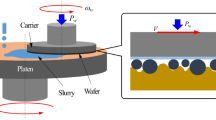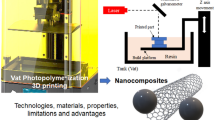Abstract
The quantification of coating adhesion on substrates is an important technology that has recently received much attention in automotive industry because the adhesion characteristics of automotive paints have a great influence on color and appearance of automobiles. Here, we present a robust and precise method for quantifying the coating adhesion of automotive paints on flat substrates using new microgap pull-off test based on the application of a micrometer-thick layer of adhesive to the divided compartments. The influence of water and organic material penetration on the coating adhesion between paint and plastic substrate is investigated in order to quantitatively measure the water resistance and organic compound resistance of automotive paints. When the paint absorbed moisture and organics, they penetrated through the paint surface to interfere with the coating adhesion between the plastic substrate and the paint layer, thereby reducing the initial coating adhesion. In addition, we investigated the effect of chlorinated polyolefin (CPO) content on the coating adhesion between nonpolar plastic substrate and polar paint coating. As the CPO content in polar acrylic paints increased, the coating adhesion of the polar paint to nonpolar plastics was increased due to the compatibilization effect of CPO resin in the coating interface.
Similar content being viewed by others
References
Akafuah, N.K., S. Poozesh, A. Salaimeh, G. Patrick, K. Lawler, and K. Saito, 2016, Evolution of the automotive body coating process — a review, Coatings 6, 24.
Aoki, Y., 1968, The role of crystallinity of polymer in the adhesion between chlorinated isotactic polypropylene and isotactic polypropylene, J. Polym. Sci. C: Polym. Symp. 23, 855–864.
Arslanov, V.V. and W. Funke, 1988, The effect of water on the adhesion of organic coatings on aluminium, Prog. Org. Coat. 15, 355–363.
Bonnerup, C. and P. Gatenholm, 1993, The effect of surface energetics and molecular interdiffusion on adhesion in multicomponent polymer systems, J. Adhes. Sci. Technol. 7, 247–262.
Clemens, R.J., G.N. Batts, J.E. Lawniczak, K.P. Middleton, and C. Sass, 1994, How do chlorinated poly(olefins) promote adhesion of coatings to poly(propylene)?, Prog. Org. Coat. 24, 43–54.
Daniels, E.S. and A. Klein, 1991, Development of cohesive strength in polymer films from latices: Effect of polymer chain interdiffusion and crosslinking, Prog. Org. Coat. 19, 359–378.
Dosdat, L., J. Petitjean, T. Vietoris, and O. Clauzeau, 2011, Corrosion resistance of different metallic coatings on press-hardened steels for automotive, Steel. Res. Int. 82, 726–733.
Guo, Q., 2012, Development trend of car painting technology, Adv. Mat. Res. 591, 2573–2582.
Huang, Y., S. Shu, Z. Lu, and Y. Fan, 2007, Characterization of the adhesion of thin palladium membranes supported on tubular porous ceramics, Thin Solid Films 515, 5233–5240.
Kim, S.M. and K.J. Kim, 2015, Effects of moisture and temperature on recrystallization and mechanical property improvement of PA66/GF composite, Polym. — Korea 39, 880–888.
Liu, G. and G. Qiu, 2013, Study on the mechanical and morphological properties of toughened polypropylene blends for automobile bumpers, Polym. Bull. 70, 849–857.
Pelletier, H., C. Mendibide, and A. Riche, 2008, Mechanical characterization of polymeric films using depth-sensing instrument: Correlation between viscoelastic-plastic properties and scratch resistance, Prog. Org. Coat. 62, 162–178.
Pham, H.T., C.L. Weckle, and J.M. Ceraso, 2000, Rheology enhancement in PC/ABS blends, Adv. Mater. 12, 1881–1885.
Ryntz, R.A. and B. Buzdon, 1997, The relationship between clearcoat permeability and adhesion promoter penetration to the gasoline resistance of painted TPO substrates, Prog. Org. Coat. 32, 167–172.
Schmitz, P.J. and J.W. Holubka, 1995, Investigation of the “Surface” and “Interphase” composition of adhesion promoter/thermoplastic olefin systems: The effect of adhesion promoter bake temperature, J. Adhes. 48, 137–148.
Tomasetti, E., D. Daoust, R. Legras, P. Bertrand, and P.G. Rouxhet, 2001, Diffusion of adhesion promoter (CPO) into polypropylene/ethylene-propylene (PP/EP) copolymer blends: Mechanism, J. Adhes. Sci. Technol. 15, 1589–1600.
Tomasetti, E., S. Vandrope, D. Daoust, T. Boxus, J. Marchand-Brynaert, C. Poleunis, P. Bertrand, R. Legras, and P.G. Rouxhet, 2000, Diffusion of an adhesion promoter (Chlorinated polypropylene) into polypropylene/ethylene-propylene compolymer (PP/EP) blends: method of quantification, J. Adhes. Sci. Technol. 14, 779–789.
Wolkenhauer, A., G. Avaramidis, E. Hauswald, H. Militz, and W. Viol, 2008, Plasma treatment of wood-plastic composites to enhance their adhesion properties, J. Adhes. Sci. Technol. 22, 2025–2037.
Zhang, X., Y. Chen, Y. Zang, Z. Peng, Y. Zhang, and W. Zhou, 2001, Effects of ABS-g-MAH on mechanical properties and compatibility of ABS/PC alloy, J. Appl. Polym. Sci. 81, 831–836.
Author information
Authors and Affiliations
Corresponding author
Rights and permissions
About this article
Cite this article
Cho, C.H., Son, I., Yoo, J.Y. et al. Precise and quantitative assessment of automotive coating adhesion using new microgap pull-off test. Korea-Aust. Rheol. J. 31, 89–96 (2019). https://doi.org/10.1007/s13367-019-0010-9
Received:
Revised:
Accepted:
Published:
Issue Date:
DOI: https://doi.org/10.1007/s13367-019-0010-9




